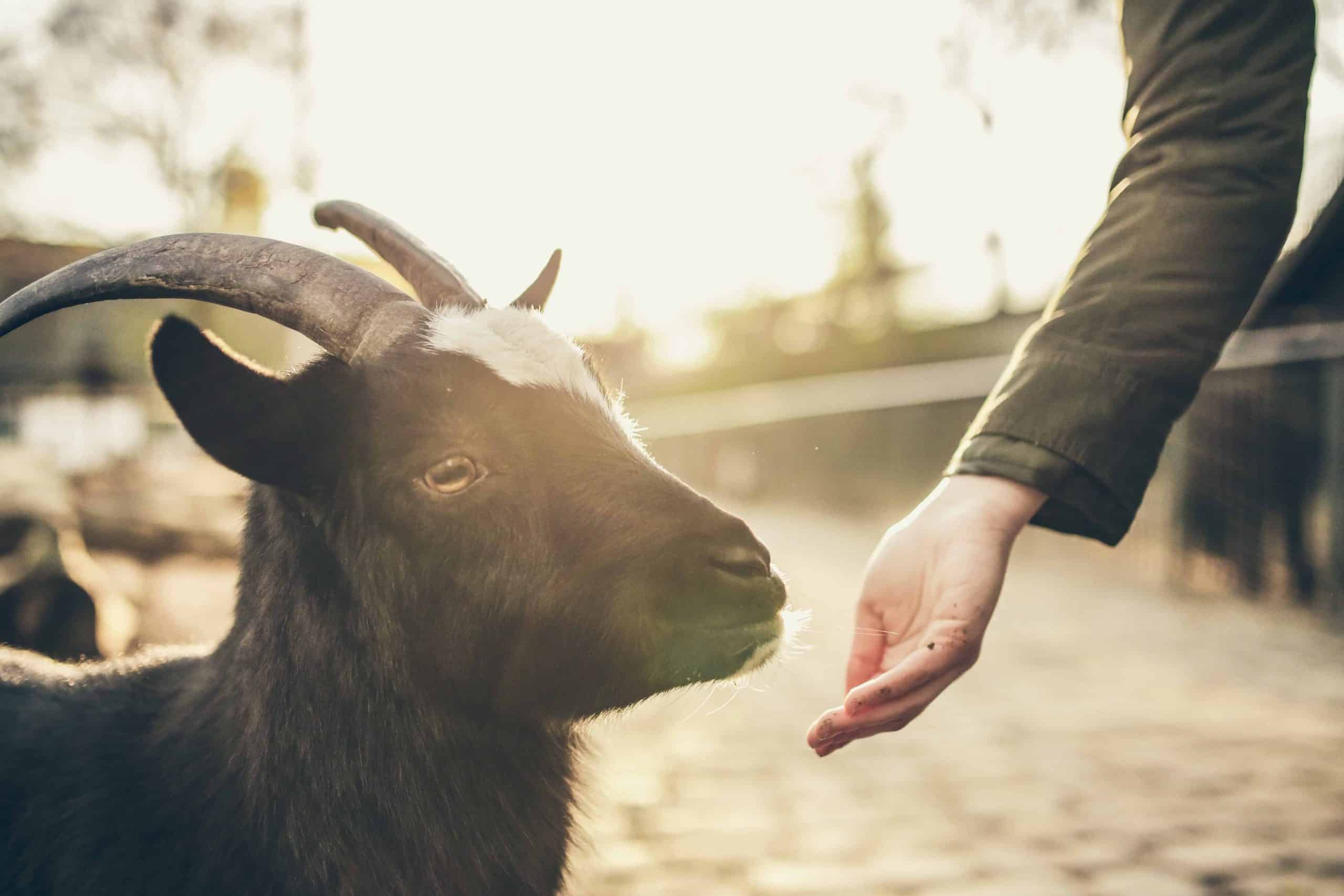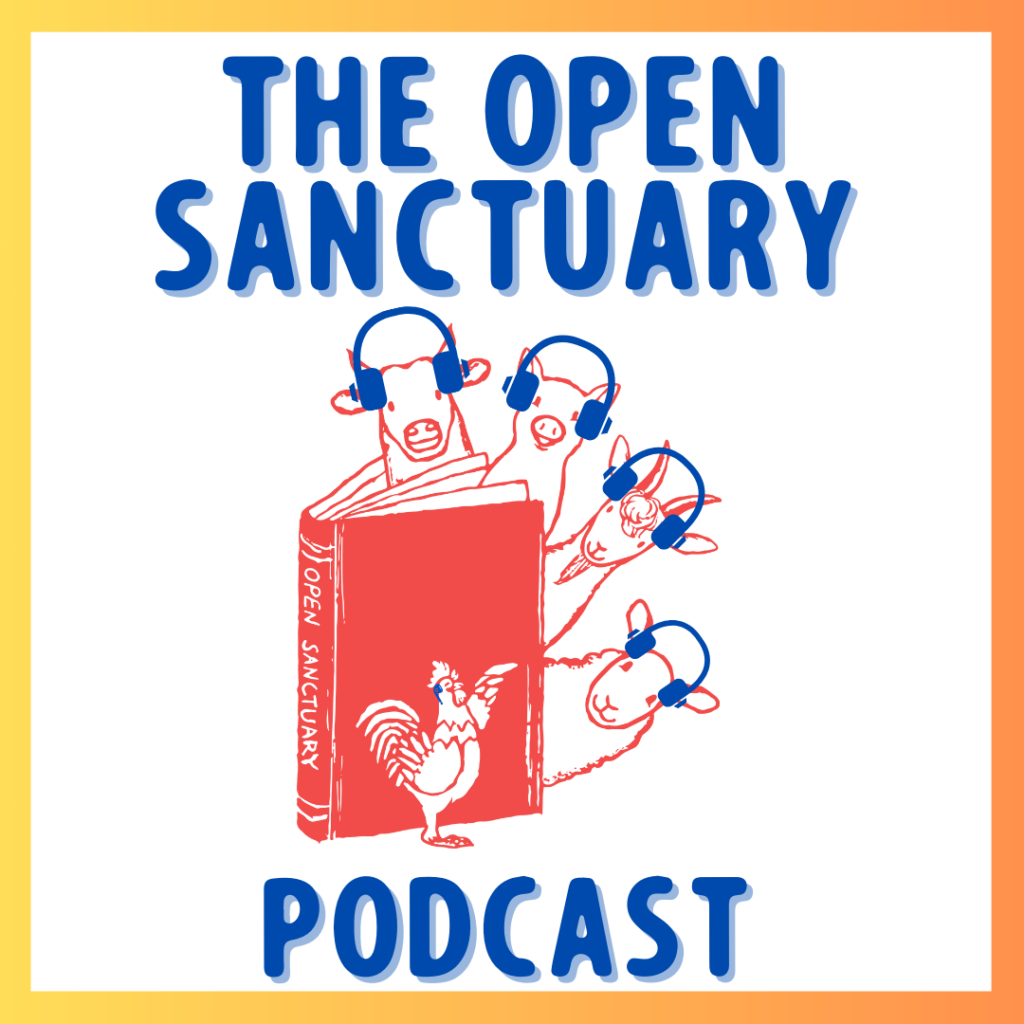
This resource has been fully reviewed and updatedA member of The Open Sanctuary Project’s staff has given this resource a full review and provided updates where necessary. by a member of The Open Sanctuary Project team as of July 27, 2022.

We Have A Podcast Episode On This Subject!
Want to learn about this topic in a different format? Check out our episode of The Open Sanctuary Podcast about petting zoos vs sanctuaries here!
For many people, the closest experience that they might have had to a living farmed animal outside of an agricultural operation has likely been in the form of petting zoos, either at fixed locations or at farmers markets or special events. Due to the cultural prevalence of petting zoos and the seemingly-benign nature of their operations, many folks have visited farmed animal sanctuaries expecting their experience to be more or less the same. For these same visitors, they may be surprised that sanctuaries are quite different than what they expected!
Here are some ways that farmed animal sanctuaries are not like and should not be like farmed animal petting zoos:
The Purpose Of A Petting Zoo Versus A Sanctuary
Humans typically operate petting zoos for one primary reason: monetary profit in exchange for the enjoyment and amusement of other humans, either directly through the petting zoo’s own facility or as an additional activity at a separate public event. Although there may be a mandate to treat the animals gently, by and large, the petting zoo experience is designed to allow humans to handle animals regardless of whether it is safe, appropriate, or consensual. Petting zoo experiences also typically offer little in the way of education beyond the basic identification of species.
By contrast, a farmed animal sanctuary should be a nonprofit organization focused on providing individualized care to animals and centering the residents’ emotional and physical well-being rather than prioritizing human desires. As such, a farmed animal sanctuary should always allow residents the autonomy to avoid human contact if they do not wish to interact with humans and should not allow humans into the living spaces of those who are uncomfortable with or uninterested in human contact. In place of forced interactive experiences, farmed animal sanctuaries can consider offering human visitors the opportunity to meet ambassador residents, who have been known to be more amenable to human interaction so long as they always have a choice to engage or not. Sanctuaries can use these visits and ambassador interactions as opportunities to talk about the plight of farmed animals like them and offer folks actionable ways to help.
The Animals As Individuals
The animals at petting zoosOrganizations where animals, either rescued, bought, borrowed, or bred, are kept, typically for the benefit of human visitor interest. are often bred or purchased specifically at a young age because younger animals are less likely to be assertive than older animals and are more appealing to visitors. Animals at petting zoos are also often fed treats by visitors, regardless of whether this food is appropriate or even necessarily healthy for the individual animal. Additionally, animals are often moved around at petting zoos and forcibly placed into new, unfamiliar areas that are surrounded by an overwhelming amount of humans. These animals are typically treated as anonymous props for humans to enjoy regardless of how they may feel.
At a farmed animal sanctuary, animals should never be bred (or purchased, typically), and a resident would only be younger by chance or rescue need. A younger resident should typically not be seen by visitors until they’ve grown a fair bit and developed a more robust immune system to protect their lifelong health. A farmed animal sanctuaryAn animal sanctuary that primarily cares for rescued animals that were farmed by humans. should also not allow visitors to feed residents unless they have been specifically assigned to do so by a responsible caregiverSomeone who provides daily care, specifically for animal residents at an animal sanctuary, shelter, or rescue. or staff member because many individual animals have specific dietary and nutritional needs that must be monitored. If a sanctuary does allow limited feedings, in most cases, they should discourage hand-feeding to prevent residents from becoming more food-motivated.
Sanctuary residents should always be treated as individuals who have their own stories, needs, and preferences that can be shared with visitors rather than be treated as an anonymous member of their species.
Safety Protocols
Petting zoos typically have lax health protocols. Oftentimes they are hosted in areas that also serve food for human consumption, like county fairs and markets. It is not unheard of for children to develop zoonotic diseases from handling animals at petting zoos. In addition, due to their laissez faire approach to animal handling, injuries to both humans and animals are common occurrences at petting zoos.
An animal sanctuary should always follow strict biosecurity protocols and ensure that any residents currently considered appropriate for visitors to meet are not exhibiting signs of illness or injury. In addition, visitors should always be accompanied by a responsibly trained tour guide or resident caregiver to facilitate safe interactions for both humans and residents rather than be able to approach and interact with residents unmonitored.
The Outcome For The Animals
Animals at a petting zooAn organization where animals, either rescued, bought, borrowed, or bred, are kept, typically for the benefit of human visitor interest. are typically either sold into animal agricultural operations (if the zoo itself wasn’t created by an agricultural entity using their own animals) or sent to auction at the end of a petting zoo’s operational season. This is because the demand is greater for younger, more docile animals that are easier to move, and their individual lives have little value outside of this small window of time.
Animals at animal sanctuaries should either be given lifelong care at the sanctuary (with strict contingencies to ensure their ongoing safety and comfort), or they should be adopted out to compassionate forever homes. At the end of their life, these residents should be given dignified end of life care and consideration.
Ultimately, petting zoos are a place for humans to reinforce the belief that animals exist solely for human desires. A sanctuary should provide an alternative to this harmful belief.






